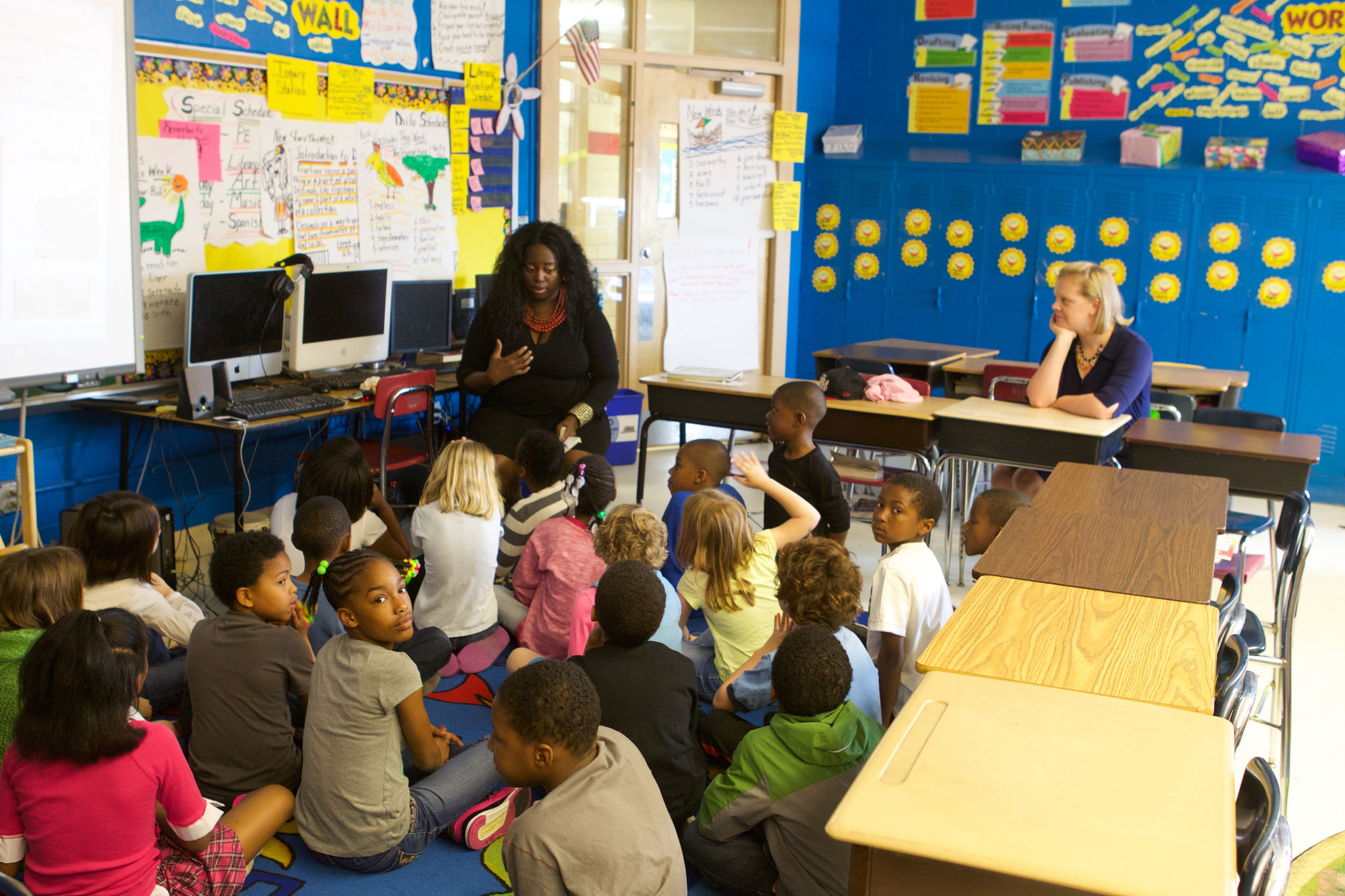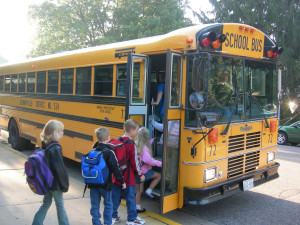Main Body
A Rationale for What You Do
Before you start the year, you must have a clear vision of where you are going and who you are as both a person and a teacher. These insights provide the basic rationale for all that you do and give you an immediate response to anyone who asks you, “Why?”

1. Your Content Goals or Standards
David Campbell said it best: “If you don’t know where you are going, you will end up someplace else!” You must know the content goals or standards that you are expected to teach and the individual skills or benchmarks that are involved. Check with your team leader or department chair or fellow teachers and make a note of where the goal(s) or standard(s) can be found for each class you teach.
Class Where to find standards
__________________ ____________________________________________________________
__________________ ____________________________________________________________
__________________ ____________________________________________________________
__________________ ____________________________________________________________
__________________ ____________________________________________________________
Often posters showing the goals/standards are already published and available for your use. If sharing rooms or lack of board space keeps you from displaying them, make sure you have copies available for students and parents.
In any case, it is especially important that you make students aware of the goals/standards you are addressing in a unit or a particular lesson. Here are some options:
- Check them off on a wall poster as you address them.
- Note them on assignment pages.
- Have students use check-off sheets in their notebooks.
My system for “publicizing” goals
_______________________________________________________________________________
_______________________________________________________________________________
_______________________________________________________________________________
2. A Syllabus for Each Subject You Teach
!["Notepad" by g4ll4ls [CC-BY-SA 2.0] https://flic.kr/p/bVMgkE](https://milnepublishing.geneseo.edu/app/uploads/sites/16/2016/12/7172173608_e2129b9caf_z-150x150.jpg)
Have a syllabus prepared for each class you teach. High school and middle school students should get a copy the first day of school. For elementary students, copies should be available at least for parents. A syllabus is most helpful if it includes the topics you will be addressing, a general timeline, and an explanation of both your grading scale and grading policy. Make sure you know the answers to these questions:
1. Does a syllabus already exist? If so, where?
_______________________________________________________________________________
_______________________________________________________________________________
_______________________________________________________________________________
2. Are there specific parameters for grade distribution and/or specific formulas for figuring grades? (Homework = 20%, etc.)
_______________________________________________________________________________
_______________________________________________________________________________
_______________________________________________________________________________
3. Are you expected to report students’ status on any standards? If so, when and how?
_______________________________________________________________________________
_______________________________________________________________________________
_______________________________________________________________________________
3. Who Are You As a Person?
Knowing who you are as a person often gives students the key to connecting with you. Here is an example:
Example
Welcome! I’m Mrs. Ford, and I’m delighted that we will be working together this year. Here are some things you should know about me as a person: I almost always wake up happy. My pet peeves are people who drive below the speed limit in the far left lane, who call and don’t identify themselves, and who have “call waiting” and ask me to “hold.” I have been married to my college sweetheart for forty-six years, and we still like and love each other. I have six grandchildren. I love golden retrievers and driving the tractor at our cabin.
I will share the following information with my students:
My personality
_______________________________________________________________________________
_______________________________________________________________________________
_______________________________________________________________________________
My hobbies/interests
_______________________________________________________________________________
_______________________________________________________________________________
_______________________________________________________________________________
My pet peeves
_______________________________________________________________________________
_______________________________________________________________________________
_______________________________________________________________________________
Note: Many teachers who do not have to share rooms or travel like to make a bulletin board that illustrates “who they are” with a display of family photos, college diplomas, pictures of pets, etc. If you do travel from room to room, you could personalize your cart with pictures and artifacts.
4. Who Are You As a Teacher?
Students also need to know who you are as a teacher. How do you feel about your job? What are your pet peeves in the classroom? Here is an example of what you might say to them:
Example
You need to know that I love teaching! There is no job I would rather have. I have been teaching for forty years. These are my pet peeves in the classroom:
- Students who slump on their desks
- The expression “Shut up!”
- Students who come back after an absence and ask, “Did you do anything while I was gone?”
What I want the students to know about me as a teacher including my pet peeves
_______________________________________________________________________________
_______________________________________________________________________________
_______________________________________________________________________________
_______________________________________________________________________________

5. What Is Your Philosophy of Education?
Philosophies of education are as varied as the teachers who develop them. Here are some examples:
I want students to be able to say three things when they leave me: I am successful! I am a worthwhile person; I deserve a place on this earth! I am ready for whatever life throws at me, today or tomorrow! —Roberta Ford
With appropriate planning and nurturing, all students can achieve beyond their apparent ability. —Robert Scott
All students can learn and should be placed in an environment conducive to learning. Learning is not just for the best and brightest students. Kids must come first. Students need to be taught the skills so that they can be learners long after they have left the classroom. If treated with respect, they will show respect for others. Every day my students teach me something. —Niki Kigerl
Two beliefs drive my educational philosophy: First I believe that all students can learn. They do not, however, learn in the same way or at the same rate. The real art of teaching is to find the right method or combination for each child. Secondly, I believe in multiple intelligences. Too much time and energy is focused on remediating weaknesses and too little on building areas of strength. Good teachers build success into their students’ lives, reinforce efforts in its direction, and help students identify the obstacles in its path. —Mary Dove
My philosophy of education is rather eclectic. If it works, use it. Start at a level where students are successful and build on their skills. —Barb Sanborn
My philosophy of education
_______________________________________________________________________________
_______________________________________________________________________________
_______________________________________________________________________________
_______________________________________________________________________________
6. What is Your Commitment to the Students?
We always think about rules and expectations for students. How often, though, do we set a good example by stating what the rules and expectations are for us? Here is an example of what you might include in your commitment to your students:
Example
I pledge that I will do the following:
- Provide instruction that supports state standards.
- Be available to give extra help as needed.
- Treat students with respect.
- Keep grades up to date on the computer.
- Maintain a classroom atmosphere conducive to learning.
- Follow a due process plan for classroom discipline.
My commitment to students
_______________________________________________________________________________
_______________________________________________________________________________
_______________________________________________________________________________
_______________________________________________________________________________
_______________________________________________________________________________
7. Confidentiality
It’s vital for students to know they can trust you. However, it’s even more important for them to know that you will not keep secrets that involve their safety or that of other students, that you will immediately go to the appropriate staff person to report any situation that you feel puts them or others in harm’s way, and that you are willing to pay the price of their friendship or their liking you in order to keep them and others safe. Here are some of the specific issues that this includes:
- Running away from home
- Suicide threats
- Physical or mental abuse
- Threats/hints of violence towards themselves or others
How I will explain confidentiality to my students
_______________________________________________________________________________
_______________________________________________________________________________
_______________________________________________________________________________
!["Margaret Cone Head Start Center 3" by US Department of Education [CC-BY 2.0] https://flic.kr/p/fCVgyk](https://milnepublishing.geneseo.edu/app/uploads/sites/16/2016/12/9606781879_5a0f7292d5_z-300x232.jpg)

